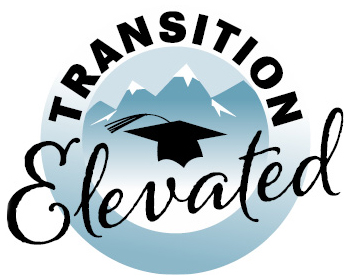Educators
Learn how your school can develop and provide high-quality postsecondary transition instruction, experiences, and partnerships throughout a student's secondary school years to prepare them for a successful transition to adult life. This page is designed for all secondary educators including special and general education professionals, Career and Technical Education teachers, school counselors, school leaders, and other postsecondary transition staff.
Postsecondary Transition Padlets
The Postsecondary Transition Specialists at Utah State Board of Education ( USBE) have created numerous Padlets with information, recordings, effective practices, and other resources to support educators in their work with students with disabilities. Topics cover a wide array of topics in postsecondary transition.
Canvas Courses
USBE has developed various courses to support educators in topics of postsecondary transition planning. These courses include:
- Postsecondary Transition Process: Writing Compliant and Quality Transition Plans (Asynchronous)
- The Postsecondary Transition Process: Diving Deeper into Compliant and Quality Transition Plans (Hybrid synchronous)
- Building Post-School Success for Students with Complex Needs
- Customized Employment for Students with Complex Needs: A course for educators
- Postsecondary Transition Assessments (asynchronous)
For more information, subscribe to the USBE Special Education Newsletter or contact the Postsecondary Transition Team.
Other Learning Opportunities
- Utah’s Institute on Postsecondary Transition
- The Utah Institute on Postsecondary Transition is an annual two-day event that has been held since 2011. The event is collaboratively hosted by the Utah State Board of Education (USBE) and the Utah State Office of Rehabilitation (USOR). It is focused on increasing outcomes for students with disabilities in the post school areas of education/training, employment, and independent living. The specific focus area from year to year is dependent upon the postsecondary transition related needs of Local Education Agencies (LEAs) as well as State-level postsecondary transition data. Team collaboration sessions are structured to create LEA postsecondary transition plans that focus on the implementation of best practices in postsecondary transition planning.
- Postsecondary Transition Talks
- Live virtual monthly discussions on various postsecondary transition topics. Open to all professionals who work with postsecondary transition-aged students with disabilities
- Microcredentials
- The Compliant and Quality Postsecondary Transition Plans microcredential represents the skills and concepts necessary to successfully develop and implement postsecondary transition plans for students with disabilities (SWD) age 14 and older
- The Postsecondary Transition Assessments microcredential represents the skills and concepts necessary to necessary to successfully identify and implement postsecondary transition assessments for students with disabilities (SWD) age 14 and older.
- Workplace Supports Training
- The Workplace Supports Training is an eight-hour training with five corresponding training modules. Topics for the training include: An introduction to job coaching, professionalism in the workplace job analysis, systematic instruction accommodations, and assistive technology
- ACRE Training
- The ACRE course is designed to provide individuals with the requisite skills for understanding and delivering employment supports to individuals with disabilities. The training is competency focused and individuals will obtain the knowledge and skills to develop validated strategies to meet the diverse integrated employment needs of individuals with disabilities

Subscribe to USBE Special Educator Newsletter
Effective Practices
Taxonomy for Transition Programming 2.0
The Taxonomy 2.0 brings in the latest literature regarding predictors of postschool success, strategies to increase graduation and reduce dropout, school climate, and vocational rehabilitation services focused on fostering successful transition of youth with disabilities in college and careers.
- Student Focused Planning
- Student Development
- Interagency Collaboration
- Family Engagement
- Program Structures
Student-Focused Planning
Student focused planning involves helping a student identify their strengths, preferences, interests, and needs which will inform individualized supports to help them achieve their goals for post-school success. This process includes assessment information, student self-determination practices, and student postsecondary goals to develop individual educational programs (IEPs). Active student participation in this process leads to more meaningful goals and outcomes.
The National Technical Assistance Center on Transition: the Collaborative (NTACT:C) includes student-focused planning as one of the five primary practices in transition programming with the following sub-practices:
- IEP Development
- Planning Strategies
- Student Participation
- Postsecondary Transition Plan Process in the IEP
- Transition Elevated App
For additional resources and information on evidence-based practices, tools and strategies, sign up for a free account with NTACT:C

Resources
USBE Portrait of a Graduate
USBE Graduation Guidelines
Self-Determination and Self-Advocacy Padlet
A guiding workflow for students preparing to transition to adulthood– Charting the Life Course tools
Building Postschool Success for Students With Complex Needs Webinar Series
School To Work Toolkit
Taxonomy for Transition Programming with Predictors of Post-school Success
For a master list of Postsecondary Transition resources, visit the Transition Elevated Website Padlet.
Student Development
Student development is closely related to student-focused planning. Information collected from the postsecondary transition assessments, conducted as part of student-focused planning, helps the IEP team to identify the skills, behaviors, knowledge, and experiences a student will need to be successful in the areas of education, independent living, and employment.
The National Technical Assistance Center on Transition: the Collaborative (NTACT:C) includes student development as one of the five primary practices in transition programming with the following sub-practices:
- Assessment
- Academic Skills
- Life, Social and Emotional Skills
- Employment and Occupational Skills
- Student Supports
- Instructional Context (Kohler et al., 2016)
For additional resources and information on evidence-based practices,tools and strategies, sign up for a free account with NTACT:C

Postsecondary Transition Assessments
Postsecondary transition assessment for students with disabilities is “the ongoing process of collecting data on the individual’s strengths, needs, preferences, and interests as they relate to the demands of current and future working, educational, living, and personal, and social environments” (Sitlington et al., 2007, pp.2-3).
Matrix for age-appropriate assessments
Postsecondary Transition Assessments
Postsecondary Transition Services
Transition services must be contained within the transition IEP and are aligned with each postsecondary goal. The transition services occur during the current IEP year and are designed to support a student to develop, refine, and/or work towards achieving their post-secondary goals upon exiting high school. Transition services are encouraged to be explicit and detailed with a clear connection to the postsecondary goals and the transition assessment(s).
Predictors of Postschool Success Padlet
Postsecondary Transition Services Technical Assistance Document
Postsecondary Transition Services Padlet
Pre-Employment Transition Services
Pre-Employment Transition Services, also called “Pre-ETS,” — offered to any student with a disability — aid students in exploring and planning for successful future employment, through targeted training in career exploration, workplace readiness, counseling on postsecondary education, self-advocacy, and work-based learning.
Pre-ETS matrix – activity guide and the state map of providers.
Resources
Postsecondary Transition Services Examples Document
Postsecondary Transition Curriculum
Career Development Credential
Postsecondary Transition Process
Postsecondary Transition Assessments
Postsecondary Transition Planning Timeline
Keys to Success
YouScience
DSPD Employment Pathway Tool
Utah Assistive Technology Teams (UATT)
Utah Center for Assistive Technology (UCAT)
Utah Work Incentive Planning Services (UWIPS)
Achieving a Better Life Experience (ABLE) Accounts
Disability Determination Services (e.g. Social Security and Medicaid benefits)
Taxonomy for Transition Programming with Predictors of Post-school Success
Collaboration Definition: Interagency and intra-agency collaboration is a process in which education professionals establish partnerships with personnel from multiple departments, agencies and other service providers, to achieve the common goal of improving the postsecondary success of students with disabilities. (Utah State Board of Education)
Interagency Collaboration involves the IEP team determining what community businesses, organizations, and agencies might be instrumental in supporting a student’s transition. Researchers have found evidence that interagency collaboration is a factor related to post-school success and successful adult outcomes for youth (Finn & Kohler, 2009; Noonan, Morningstar & Erickson, 2008).
The National Technical Assistance Center on Transition (NTACT) includes interagency collaboration as one of the five primary practices in transition programming with the following sub-practices:
- Collaborative Framework
- Collaborative Service Delivery (Kohler et al., 2016)
For additional resources and information on evidence-based practices,tools and strategies, sign up for a free account with NTACT:C.

Utah Statewide Collaborative on Postsecondary Transition (STC)
The STC is a working partnership of state agencies and other organizations that serve transition-age (14-22) youth across the state of Utah. The STC includes organizations that are disability-specific and those which serve youth in general to address the needs of and resources for transition-age youth with disabilities. The broad goal of this collaborative is to improve post school outcomes for youth with disabilities.
The purpose of this work is to collaboratively develop a shared system wide vision and define common language to address postsecondary transition in a unified way. The STC seeks to identify service gaps and overlaps to determine what service areas need to be scaled up to better meet the needs of transition-age youth with disabilities. The STC has developed a theory of action and a logic model detailing implementation activities needed to meet the broader goals. This work will improve access to needed services and therefore improve student postsecondary outcomes in employment, postsecondary education, and independent living.
The results of the STC will be reported to state and federal policy makers for the five-year period of 2021 to 2025 through the Utah State Board of Education State Systemic Improvement Plan (SSIP).
Agencies Collaborating in the STC include: [Some of the links on the test site are broken. We have fixed them in this list but not on the test site.]
Utah State Board of Education (USBE)
- Special Education Secondary Transition and Graduation
- Career and Technical Education (CTE)
- Adult Education
- Youth In Care (YIC)
Department of Workforce Services
- Vocational Rehabilitation(VR)
- Pre-Employment Transition Services (Pre-ETS) Providers
- Department of Workforce Services (DWS) Career and Education Program
Department Health and Human Services
- Division of Services for People with Disabilities (DSPD)
- Substance Use and Mental Health (SUMH)
- Division of Family Health
- Children with Special Healthcare Needs (CSHCN)
- Division of Juvenile Justice and Youth Services (JJYS)
Utah Parent Center (UPC)
Utah Systems of Higher Education(USHE)
Utah Higher Education Inclusion Alliance (UHEIA)
Utah Statewide Independent Living Council
Utah Special Needs Parent Teacher Association
Legislative Coalition for People with Disabilities (LCPD)
Governor’s Committee on Employment for People with Disabilities (GCEPD)
Utah Developmental Disabilities Council (UDDC)
Institute for Disability Research Policy and Practice (IDRPP)

Family engagement is crucial during the postsecondary transition process. Research shows that when families are meaningfully and continuously engaged in their children’s learning and development, they can positively impact their child’s health, development, academic, and well-being outcomes into adulthood.
National Technical Assistance Center on Transition: The Collaborative (NTACT:C)
Family engagement refers to a family’s involvement in helping their child plan for the future and in supporting him or her during the postsecondary transition process. Parent Involvement means parents / families / guardians are active and knowledgeable participants in all aspects of postsecondary transition planning (e.g., decision-making, providing support, attending meetings, and advocating for their child). Other than the students themselves, parents are often the only people who remain part of the postsecondary transition planning process and their child’s IEP team throughout the school years.
Children learn about their own value and potential through parent support and expectations. These positive self-attitudes are foundational for the development of self-determination and self-advocacy which are predictors of success in postsecondary education and training, employment and independent living. Educator and family relationships are critical in supporting, engaging and empowering families.
The National Technical Assistance Center on Transition: the Collaborative (NTACT:C) includes family engagement as one of the five primary practices in transition programming with the following sub-practices:
- Family Involvement
- Family Empowerment
- Family Preparation (Kohler et al., 2016)
For additional resources and information on evidence-based practices,tools and strategies, sign up for a free account with NTACT:C
Resources
Transition Elevated App
This app is designed to help Utah students and educators participate in and enhance the postsecondary transition planning process. As a Utah student with a disability who is 14 years or older, or a family member of a transition age student, this app can help prepare for the Individualized Education Program (IEP) meeting where postsecondary transition planning will be discussed and the Postsecondary Transition Plan will be created.Transition Planning Timeline (A timeline of postsecondary transition activities by grade level/age.)
Transition University
Preparing Students for Postsecondary Success Padlet
USBE Family and Community Engagement
Utah College Guide – English
Utah College Guide – Spanish
Charting the LifeCourse Tools
Taxonomy for Transition Programming with Predictors of Post-school Success
Program Structures
Program Structure refers to the foundational elements necessary for school personnel to efficiently and effectively implement postsecondary transition services. Effective program structure topics include the following: philosophy, planning, policy, evaluation, human resource development, and the general structures and attributes of schools.
Postsecondary transition practices research has demonstrated that post-school outcomes of students with disabilities improve when multiple stakeholders and organizations work together to implement a broad perspective of postsecondary transition planning, or postsecondary transition-focused education. The impact of postsecondary transition-focused education is greatly enhanced when service systems and programs connect and support the implementation and application of such learning. National Technical Assistance Center on Transition: The Collaborative (NTACT:C)
The National Technical Assistance Center on Transition: the Collaborative (NTACT:C) includes program structure as one of the five primary practices in postsecondary transition programming with the following sub-practices:
- Program Characteristics
- Program Evaluation
- Strategic Planning
- Policies and Procedures
- Resource Development and Allocation
- School Climate (Kohler et al., 2016; Test et al., 2010; Test et al., 2009)
For additional resources and information on evidence-based practices, tools and strategies, sign up for a free account with NTACT:C

CTE
Career and Technical Education (CTE) provides all students access to high-quality, rigorous career-focused programs that result in attainment of credentials with labor market value. Research has shown that participation in CTE while still in high school improves the likelihood of meaningful employment after high school for students with disabilities.
School Counseling
The Plan for College and Career Readiness process is a comprehensive approach to individual student planning in which school counselors coordinate ongoing activities to help students establish personal goals and develop future plans. School counselors help students make successful transitions from grade level to grade level, set future goals (including selecting college and career pathways), and establish career literacy. School counselors who establish a systemic approach for the school counseling program build an environment where each student has equitable access to all school programs and can achieve and attain their goals.
Career Development Credential (CDC)
The Career development Credential is a career focused credential designed to prepare a student with a disability for a successful post school outcome in employment and post secondary education/training. The CDC is earned in addition to a regular high school diploma, Alternate Diploma, or a certificate of completion.
Resources
NTACT Matrix – Evidence-based practices and predictors
College and Career Readiness School Counseling Program Model (video)
Absenteeism Dropout prevention
Personalized Competency-Based Learning
Safe and Healthy Schools
USBE Strategic Plan
USBE IEP Reflective Framework
USBE Special Education Rules
USBE Adult Education Policy and Procedures Guide
Comparison of the Individuals with Disabilities Education Act (IDEA), Section 504 of the Rehabilitation Act (Section 504), & The Americans with Disabilities Act (ADA)
Preparing for postsecondary education and employment; Individual Education Program vs. 504 Plan
Workforce Innovation and Opportunity Act (WIOA), IDEA, and Perkins Crosswalk
Taxonomy for Transition Programming with Predictors of Post-school Success

